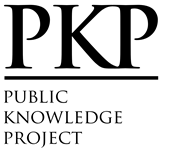CONCEPTUAL METAPHORS ABOUT THE AMERICAN DREAM IN F. SCOTT FITZGERALD’S THE GREAT GATSBY
DOI:
https://doi.org/10.56844/tckhnn.78.773Keywords:
conceptual metaphor, cognitive linguistics, literary analysis, literature, symbolic imagesAbstract
This study examines the use and significance of conceptual metaphors in F. Scott Fitzgerald’s The Great Gatsby, focusing on how these linguistic and cognitive devices are used to critique the American Dream and American society in 1920s. Using Conceptual Metaphor Theory, this study illustrates how abstract concepts are understood through concrete imagery, bridging cognitive linguistics and literary analysis. The findings reveal that Fitzgerald’s metaphors serve as cognitive tools for understanding societal complexities, demonstrate his literary artistry, and reflect the cultural zeitgeist of the Jazz Age. These metaphors can be considered central to the novel’s enduring relevance, creating a multi-layered narrative that resonates with readers nearly a century after its publication. This study contributes to literary studies and cognitive linguistics, highlighting the role of metaphor analysis in connecting these fields and offering fresh perspectives on classic literature. It also underscores the potential for comparative studies and further exploration of metaphorical language in understanding cultural and historical contexts.






